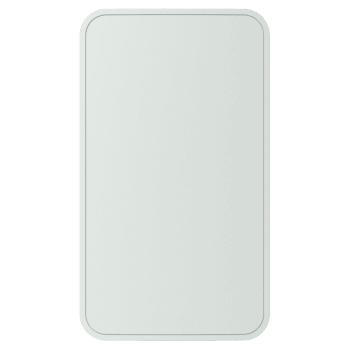ZS Standard
The OEMCTRL line of intelligent zone sensors provides the function and flexibility needed to manage the conditions important to the comfort and productivity of the zone occupants. ZS sensors are available in a variety of zone sensing combinations to address your application needs. Combinations include temperature, relative humidity, and indoor air quality (carbon dioxide or VOCs (Volatile Organic Compounds)). Built to be flexible allowing for easy customization of what the user/technician sees. Designed to work with all OEMCtrl controllers, the ZS sensor line includes the ZS Standard, ZS Plus, ZS Pro and ZS Pro-F.
We offer several lines of intelligent sensors designed to work with all OEMCtrl controllers. Our sensors feature precise measurement, flexible capabilities and attractive, low-profile enclosures. Multiple models offer options for visibility and functionality so you can be sure to find exactly what you need for your application.
- Provide flexibility for any building sensing application with monitoring of key building conditions, including temperature, humidity, CO2, and VOC's
- Attractive, low profile enclosure in neutral color cover complements any room décor
- Combination sensing within one device efficiently reduces installation costs, wiring and wall clutter
- Multiple ZS room sensors can be daisy-chained to one controller for temperature averaging or high/low select to achieve optimal control
- A hidden communication port allows a laptop computer to be connected to the OEMCtrl Controller
- Mounts on a standard 2 inch by 4 inch electrical box for easy installation
- You choose the combinations for measurement of zone temperature and/or relative humidity, CO2, VOC
- Multiple models offer a choice of options, including a large easy-to-read display, local setpoint adjustment, local override, and fan control
Humans respirate Volatile Organic Compounds (VOCs) as well as CO2. The ZS sensor with VOC is able to measure these VOCs and indicate when a space is occupied just as well as a CO2 sensor.
The advantage of the VOC sensor is that it measures air contaminants from other sources besides respiration, such as building materials, cleaners, perfumes, and furniture and carpet off-gassing. So, using this sensor for demand controlled ventilation is a way of achieving true indoor air quality, rather than CO2 dilution.
A further benefit is that it requires no additional work on your part. That’s because the sensor converts the VOC reading to a CO2 equivalent level. This lets you use ASHRAE’s CO2 based VRP schedule to ventilate.
Families of VOCs detected are:
- CO, CH4, LPG
- Alcohols
- Ketones. Ketones are solvents. The best known are Acetone and Methyl Ethyl Ketone or MEK.
- Organic Acids. Common organic acids are Lactic acid, Acetic acid, Formic acid, Citric acid and Oxalic acid
- Amines. Amines are derivatives of ammonia.
- Aliphatic Hydrocarbons. Aliphatic hydrocarbons are flammable hydrocarbons with little or no odor. Such as hexane, paraffin, methane and acetylene.
- Aromatic Hydrocarbons. Aromatic hydrocarbons are flammable hydrocarbons with a discernible odor. Examples are benzene, furan, pyridine, toluene, asphaltene and picric acid.
We offer several lines of intelligent sensors designed to work with all OEMCtrl controllers. Our sensors feature precise measurement, flexible capabilities and attractive, low-profile enclosures. Multiple models offer options for visibility and functionality so you can be sure to find exactly what you need for your application.
- Provide flexibility for any building sensing application with monitoring of key building conditions, including temperature, humidity, CO2, and VOC's
- Attractive, low profile enclosure in neutral color cover complements any room décor
- Combination sensing within one device efficiently reduces installation costs, wiring and wall clutter
- Multiple ZS room sensors can be daisy-chained to one controller for temperature averaging or high/low select to achieve optimal control
- A hidden communication port allows a laptop computer to be connected to the OEMCtrl Controller
- Mounts on a standard 2 inch by 4 inch electrical box for easy installation
- You choose the combinations for measurement of zone temperature and/or relative humidity, CO2, VOC
- Multiple models offer a choice of options, including a large easy-to-read display, local setpoint adjustment, local override, and fan control
Humans respirate Volatile Organic Compounds (VOCs) as well as CO2. The ZS sensor with VOC is able to measure these VOCs and indicate when a space is occupied just as well as a CO2 sensor.
The advantage of the VOC sensor is that it measures air contaminants from other sources besides respiration, such as building materials, cleaners, perfumes, and furniture and carpet off-gassing. So, using this sensor for demand controlled ventilation is a way of achieving true indoor air quality, rather than CO2 dilution.
A further benefit is that it requires no additional work on your part. That’s because the sensor converts the VOC reading to a CO2 equivalent level. This lets you use ASHRAE’s CO2 based VRP schedule to ventilate.
Families of VOCs detected are:
- CO, CH4, LPG
- Alcohols
- Ketones. Ketones are solvents. The best known are Acetone and Methyl Ethyl Ketone or MEK.
- Organic Acids. Common organic acids are Lactic acid, Acetic acid, Formic acid, Citric acid and Oxalic acid
- Amines. Amines are derivatives of ammonia.
- Aliphatic Hydrocarbons. Aliphatic hydrocarbons are flammable hydrocarbons with little or no odor. Such as hexane, paraffin, methane and acetylene.
- Aromatic Hydrocarbons. Aromatic hydrocarbons are flammable hydrocarbons with a discernible odor. Examples are benzene, furan, pyridine, toluene, asphaltene and picric acid.

